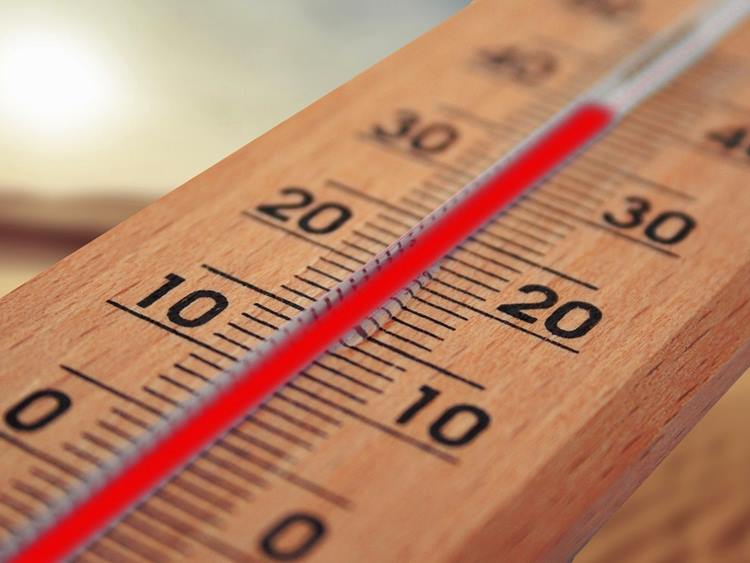
If you step inside your garage and it's like a sauna when it's the middle of summer, or it's like walking down the freezer aisle during the wintertime, something is obviously amiss. What you might not realize is that your garage door (well, garage door insulation) could be the primary reason for these uncomfortable conditions. Most people just see the garage door as a door; it opens and closes to let you in and out of the garage space. But it’s so much more than that. It’s a key part of your home’s defense against potential intruders, has a massive impact on your property’s curb appeal, and it definitely does make a big difference to how warm it feels inside your garage.
We’re going to take a look at this issue below, as well as other factors that can contribute to a garage that’s less than comfortable to spend time in.
How Older Garage Doors May Contribute to Discomfort
We spend our working lives carrying our garage door installation work in and around Arvada, and we’ve had people complain about this issue more times than we care to remember. “I want to use my garage as a workout space, but it’s either too warm or too cold” or “I can’t feel my fingers when I’m trying to enjoy my craft projects". Your garage door might be to blame. At least partly.
Here are some of the ways in which your garage door might be contributing to the problem:
1) It Has a Low Insulation Rating
If your garage door is poorly made from low-grade materials with a low insulation rating, it makes it extremely challenging – actually next to impossible – to maintain a stable temperature inside. Hot and cold temperatures transfer directly through the door, and given the surface area that the door occupies, this has a significant impact. This issue is especially common with low-grade steel and aluminum garage doors; both materials which are conductors of heat and boast low thermal resistance.
2) Air Leakage Around the Sides, Top and Bottom
While the R-value (the score given to a door according to its level of heat resistance) is extremely important, it won’t make much difference if the weather sealing around the top, bottom and sides of your door is either worn and in poor condition, or is not there at all. This will aid heat transfer and will lead to uncomfortable conditions inside your garage throughout the year.
3) The Color of Your Garage Door
This one only applies to the summer months and might sound like one of those household myths that get thrown around, but it’s actually true. If your garage door is painted a dark color, it absorbs more heat when the sun is shining directly onto it, and a portion of this heat will be transferred to the interior of the garage. Who knew the door color could be the reason you always seem to be sweating profusely in your garage during the summer months?
Other Factors That Could Affect Garage Conditions
If you have assessed the condition of your garage door installation and deemed that it is up to standard, your problems with cold or warm temperatures may be caused by something else. We’ll look at a few of the other possibilities below:
1) Garage Location
This is not something you’re going to be able to do much about, but it’s important to be aware that it could be why your garage feels so warm in the summer months.
If the position of your garage faces west or south, this means that during the hottest part of the day your garage will receive more hours of sunlight, contributing to warmer conditions inside.
2) Poor Insulation in Other Areas
It’s not just the garage door installation that has to be well insulated to keep the temperature inside bearable. It’s the entire structure. From the walls and floors, right up to the ceiling and roof. In garages that are built on a tight budget, there are often gaps where the wall meets the floor, and also around any power sockets and light switches that have been installed on the wall. You would do well to fill these gaps in, so heat energy can’t be lost in these areas. If you have the budget available, you might also want to consider adding insulation to the walls and roof, as well as having the floor resurfaced.
3) Poorly Ventilated Garage Space
This is another factor that will impact your garage in the summer rather than winter. If your garage has little to no ventilation, hot air will get trapped inside and temperatures will rise. There are two rather simple solutions to this. If you have any windows in the garage, open them to let fresh air circulate. Failing that – some garage owners aren’t in the fortunate position of having windows – leave your garage door open for a while and that’ll have the same impact.
If you have a budget and you’re prepared to make some changes, you might also consider having some static vents installed or even hooking the garage up to the home’s HVAC system by installing some exhaust fans.
Our Arvada Garage Door Installation Team Can Help
Nine times out of ten, when your garage is boiling hot in the summer and freezing cold in the summer, something went wrong with the garage door installation. At least in our experience, that's what we've seen. Whether it's the door that is poorly insulated or the weather stripping around the door is the issue. If you want us to assess these areas for you and experience the massive benefits that proper garage door insulation can bring, call our garage door repair team today.